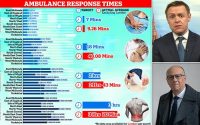Multiple Pathways Explain Age-Linked Increase in Dementia Risk

MONDAY, Sept. 24, 2018 — Multiple pathways account for the age-related increases in dementia risk, according to a study recently published in the Annals of Neurology.
Melinda C. Power, Sc.D., from the George Washington University Milken Institute School of Public Health in Washington, D.C., and colleagues used data from 1,362 autopsied participants of three community-based clinicopathological cohorts. A series of structural equation models summarizing a priori hypothesized neuropathological pathways between age and dementia risk were estimated individually and collectively.
Forty-four percent of the sample had a clinical dementia diagnosis at the time of death. The researchers found that vascular, amyloid/tau, neocortical Lewy body, and TAR DNA-binding protein 43 (TDP-43)/hippocampal sclerosis pathology pathways each accounted for a considerable proportion of the correlation between age and dementia when considered individually. The four pathways fully accounted for all variance in dementia risk previously attributed to age when considered collectively. Amyloid/tau, neocortical Lewy bodies, and TDP-43/hippocampal sclerosis pathways were interdependent; this was due to the importance of amyloid beta plaques in all three pathways. There was variation in the importance of the pathways, with the vascular pathway and the three inter-related pathways accounting for 32 and 68 percent, respectively, of the association between age and dementia.
“Age-related increases in dementia risk can be attributed to accumulation of multiple pathologies, each of which contributes to dementia risk,” the authors write. “Multipronged approaches may be necessary if we are to develop effective therapies.”
Abstract/Full Text (subscription or payment may be required)

Posted: September 2018
Source: Read Full Article


